Now that we’ve put some time (2 weeks) between us and the Philippines I am ready to give a summary of my thoughts on the country and our experiences.
The Bad
Transportation
First of all, the fumes and smog in the large cities was horrendous.
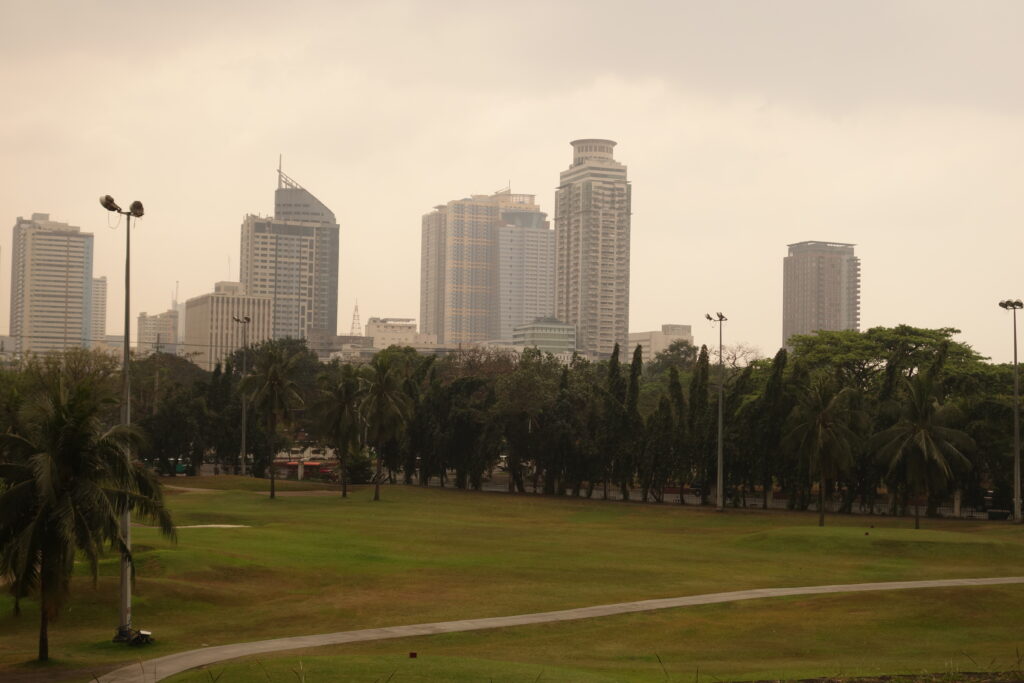
The aging diesel engines on the jeepneys belched out visible white exhaust as did the gas engines on the tricycles. We were expecting this from reading the guidebooks, so it was no big surprise when we blew our noses and our snot came out black (fortunately for our readers, we have no photographic evidence :p).
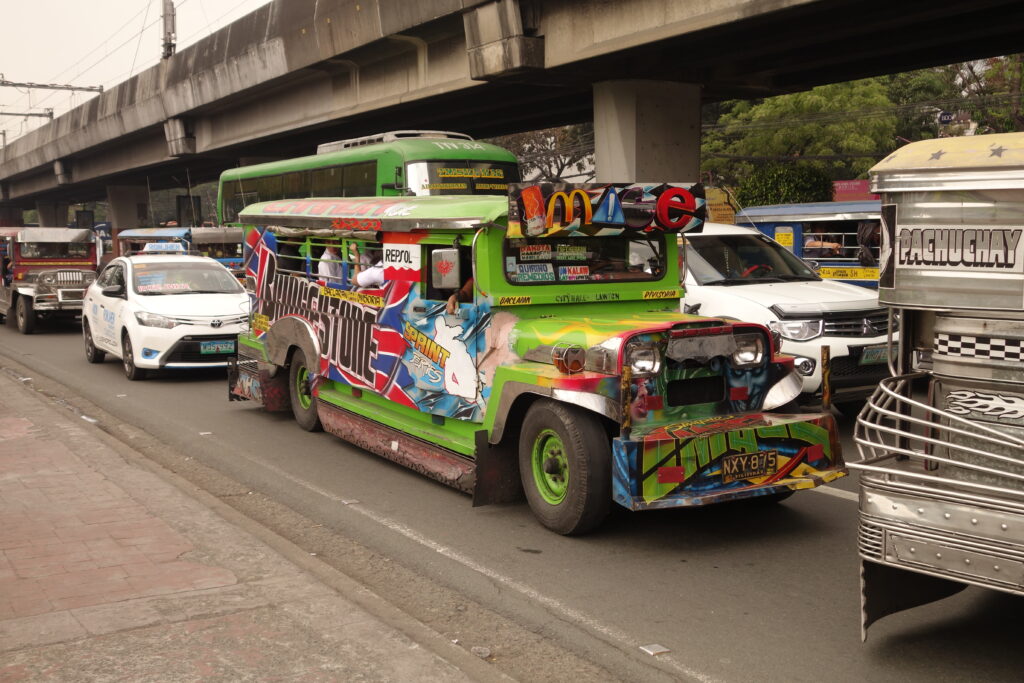
The transportation in general seemed a bit unorganized to an outsider and difficult to grasp. Transportation in the Philippines did not fit into our standard paradigm; we were used to purchasing a ticket in advance for a particular time and route. Instead, we had to get used to showing up, paying for a ticket, and getting on the next available bus. This means that you can’t ever really plan on making a connection and therefore have to add plenty of buffer hours into your day that are usually wasted. To make it extra confusing, often the destination listed on the bus was further away than our destination and traveled via the city we wanted to travel to. This required a lot of asking around to figure out which buses went via which cities. In addition, often we would have to get a bus from a place that didn’t have a bus station. This involves just standing on the side of the road (if there are actual “bus stops” in the Philippines, they are only local knowledge and are not marked) waiting for the next bus to go by that could squeeze in a few more people. I once had to stand in the stair/entrance area of a bus (with the door open!!) because that was the only space on the bus left to stand. This was even more stressful when traveling with our packs.
The next annoyance was getting used to bartering for shorter trips via motorcycle or tricycle. We ended up walking (in 90 degree weather) to some destinations just to avoid overpaying. We were also very hesitant to use taxis because many of the drivers will try to scam you by going an indirect route or having an inaccurate meter. We only traveled by taxi a few times because of this (maybe we are too paranoid?). In addition, while affordable by western standards, taxis are still very expensive by local standards. A ~50 cent set of jeepney rides somewhere would cost at least 4 dollars by taxi. My final transportation complaint is the sheer number of vehicles on the road, which are old, inefficient, and belching fumes. The new air conditioned buses which are fewer in number use the same amount of fuel as the jeepneys. This is crazy because the number of people the buses can transport is triple or more, the buses are an order of magnitude safer, and the cost of a ticket is the same as the jeepneys! So why are there so many jeepneys?! (Jon comment – The art on the jeepneys and they way that they are part of the culture is really cool and I really enjoyed their presence. It’s just all things considered they are a poor method of public transportation.)
Litter
My next bit of complaining has to do with trash and littering. I realize that litter exists everywhere and is something that all cities have to deal with. My complaint is that it didn’t seem to be being dealt with at all. Many of the tourist sites and places of accommodation had a lot of litter while there were plenty of able bodied staff hanging out nearby. It was like the locals didn’t notice it or didn’t care about it. For example, we stayed in a bungalow near the beach and the family that operated the bungalows and adjacent restaurant lived in a building across the courtyard. There was all sorts of rubbish in the courtyard and in the sand where the restaurant seating was. It would have taken 10 minutes to sweep or rake it up. Some of it had clearly been there years. Maybe I’m crazy but this really drove me nuts. Another tid bit – it seemed like normal procedure for passengers to throw trash out the windows of the jeepneys. It turns out most of the Philippines has no garbage collection and therefore people just collect their garbage (seems like the backyard is the usual spot for this) and then burn it in little piles along the side of the road. More wonderful fumes to breathe. When we had views of cities from above we usually counted a dozen or more garbage fires within sight.

Lack of upkeep
My final complaint is the lack of upkeep of infrastructure seen throughout the country (at least at tourist sites and lodging). Most of the tourist sights have seen better days and were absolutely not up to international standards. I want to clarify that when the cost is low we don’t have very high expectations (in fact, our expectations are incredibly minimal), but many of the destinations look like post-apocalyptic scenes.
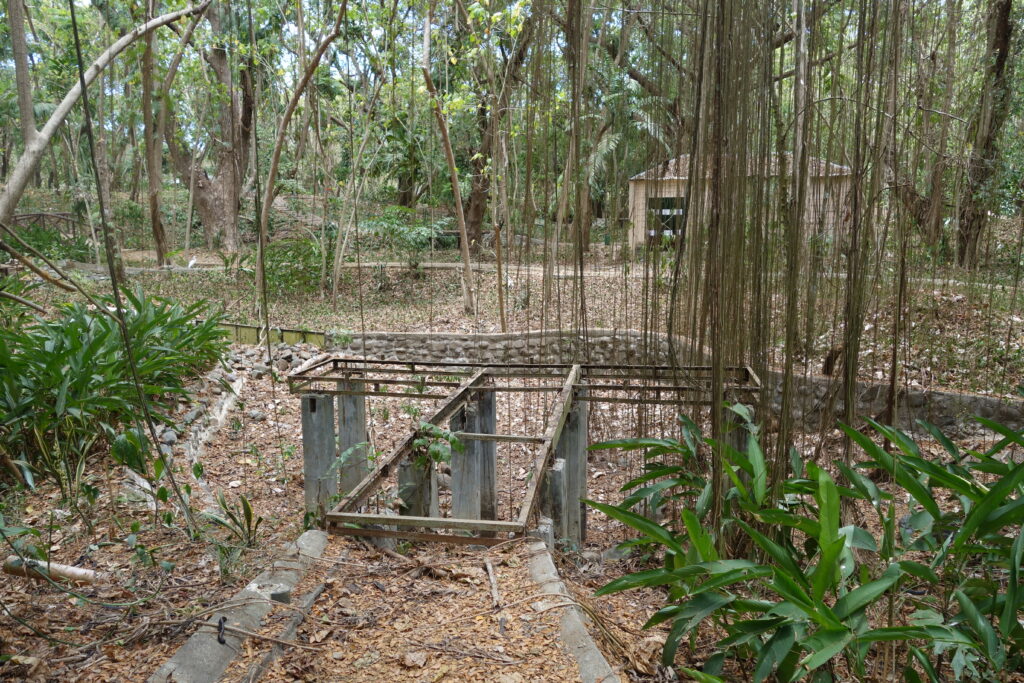
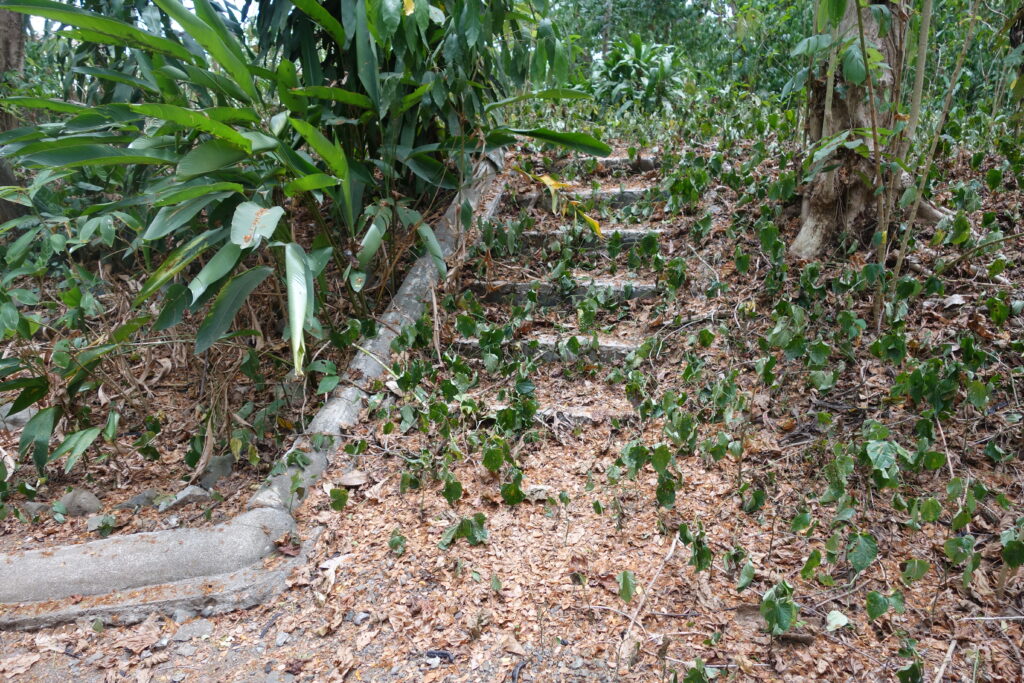
Many of these same sites are hyped up as some of the main attractions. This is where my trouble lies, I guess. When we plan to go to a specific city or island because the place has been hyped up, we end up being pretty let down when the experience doesn’t live up to expectations or the place looks like it is falling apart. Maybe part of the problem is in dealing with natural disasters – hurricane and earthquake damage can be seen throughout the country.
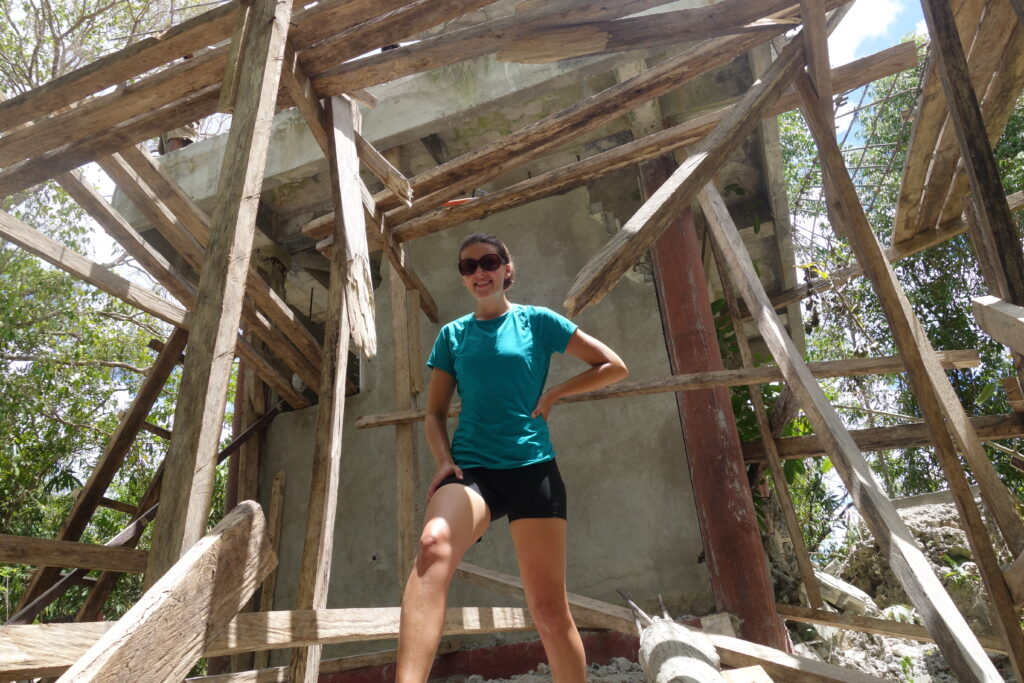
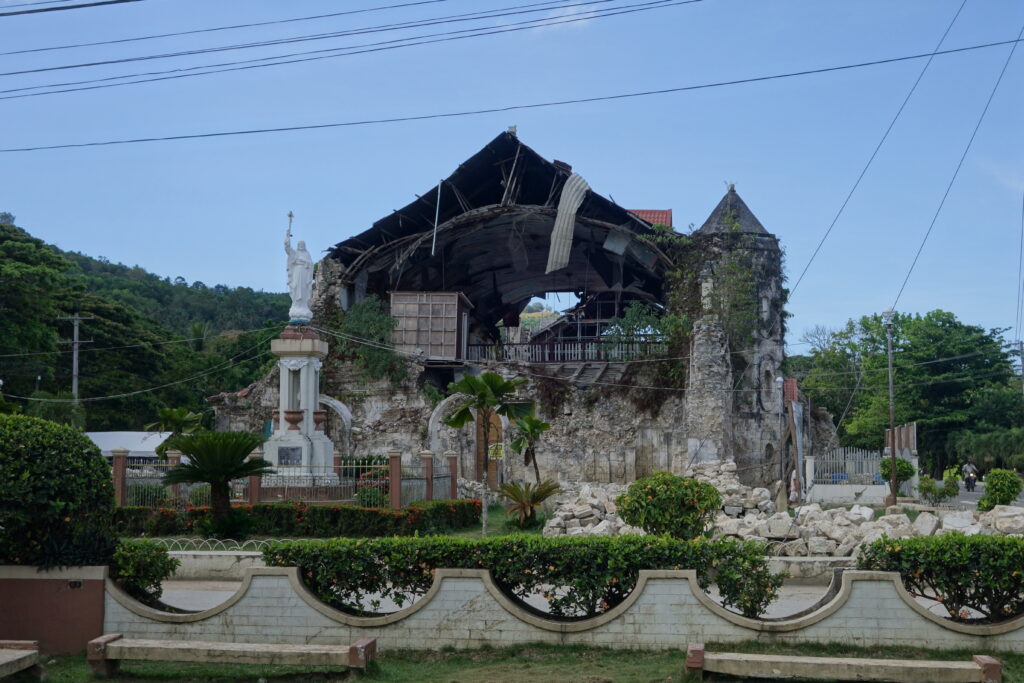
Even so, I’d have been happier with more realistic expectations. Furthermore, the staff at these sites seemed to just be there to take your money, not to give additional information or be helpful in any way. (Jon comment – The thing that struck me the most is that it doesn’t seem like any of the tourist sites or businesses were using their proceeds to reinvest. Some of the sites were clearly making decent money for the owners while the properties were completely neglected. I imagine at some of the places this is just due to levels of poverty that make saving enough to reinvest hard but at other places I really just got the sense that as long as people made enough money to get by they had no intention of improving things. If we were only talking about the accomodation being like this you could say we are asking for it by staying at really cheap hotels – but even the “major” tourist attractions were run down.) This really makes us appreciate the quality of tourist sites in the U.S.!
The Quirky
Musical culture
One of the most apparent cultural differences we noticed while in the Philippines was the love of singing and music. Videoke was extremely popular. You would find it at a restaurant (where you would rent a small private room with a videoke machine), at the beach, or for use at many shops. This was an activity for any time of day. We would often hear videoke while sipping our morning coffee. Sometimes we could even hear 3 or 4 people singing at once at different venues. Furthermore, you would hear people singing (outside the context of karaoke) while working, shopping, etc. The hostel or hotel staff would often be singing while they went about their business. People love to sing and don’t mind who hears them – even if they don’t sing well at all. It was really charming. Another related quirk of the Philippines was the style of music. American music of the 80’s and 90’s is very popular, mostly pop and awkward romantic music. You know Dan Hill’s song “Sometimes When We Touch“? I heard that song many more times than I would have liked. Other popular artists were Mariah Carey, Aerosmith, and Avril Lavigne (the songs we heard most often are linked). We suspect this potentially has to do with the radio stations wanting to play older music with more affordable licencing fees. Either that or the Philippines just loves 90’s music.
Roosters Everywhere
One of the largest pastimes in the Philippines is cock fighting. We couldn’t bring ourselves to watch a fight, but we could see the fighters. Roosters were everywhere in the Philippines – it seems like virtually every house had at least one rooster and they made their presence known. Partially because we wanted to be productive with our time, and mainly because we had no option, we started setting our alarm for 6 am. The roosters wouldn’t let us sleep any later if we tried. I thought that prevalent chickens was a general developing world sight (I’m used to seeing them in Mexico) but since we’ve only seen a few in Vietnam I’ve realized that the large number in the Philippines was due to the cock fighting.
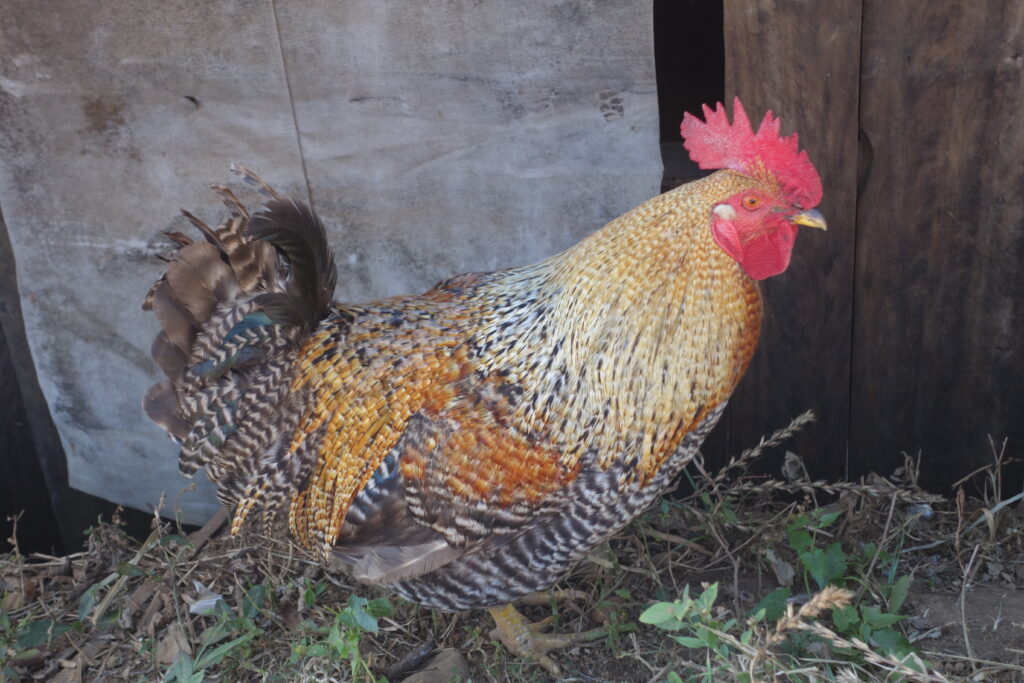

The Good
Fresh fruit and decent food
First of all, we absolutely loved the fresh mangoes and mango smoothies. They were so incredibly sweet, juicy, and cheap! A (phenomenal) mango smoothie could be purchased for as little as 60 cents! Our favorite food item was the buko pie. A traditional pie crust filled with the most succulent young coconut pieces in a sweet gelatinous mixture of coconut juice and sweetened condensed milk. Even though the food in general was nothing to write home about it was very affordable and it wasn’t that hard to find vegetarian fare – for that much we are grateful.
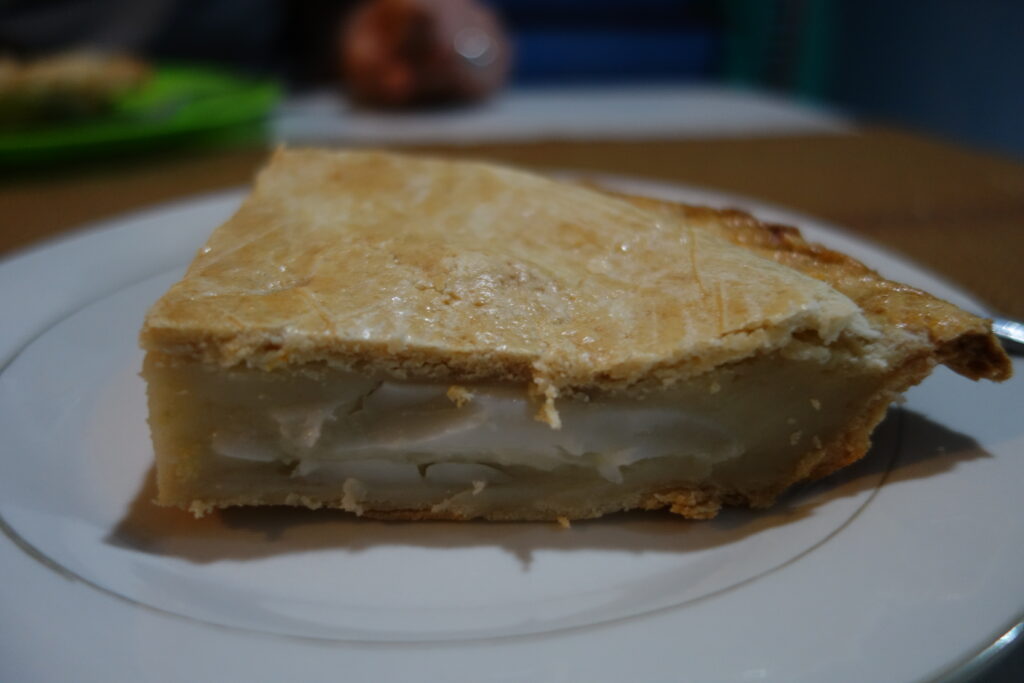
Beautiful places
Sagada
Sagada is a small city in Northern Luzon known for its hanging coffins. The local people used to hang their dead in coffins along rock faces near the town.

The hanging coffins were unique, but we found that there was so much more to this charming little town than spooky skeletons.
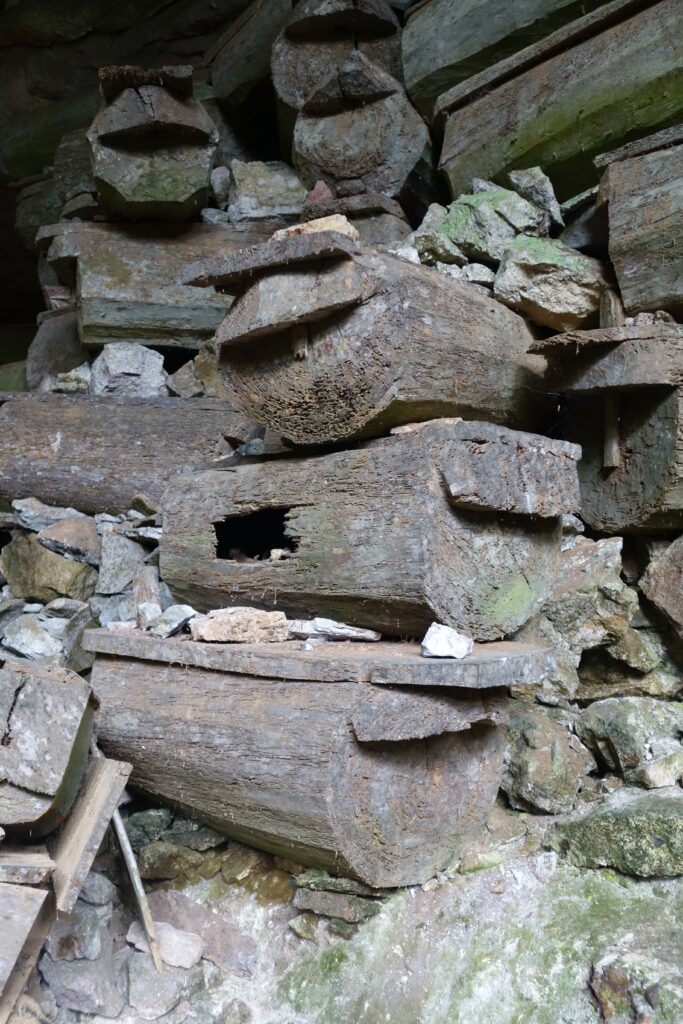
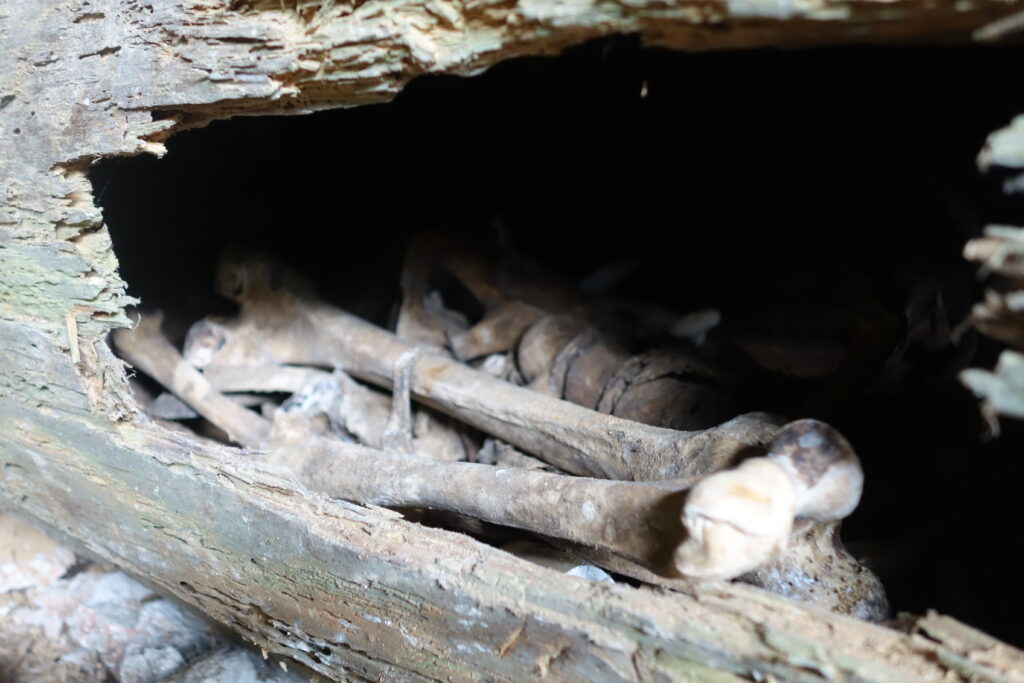
While in Sagada we drank the local civet coffee. This coffee is made from beans collected from the feces of the wild civet cat. The civet chooses and eats the best coffee cherries and during digestion, the civet’s digestive enzymes modify the coffee beans in a way that affects the flavor. The coffee had a much more mild flavor than we expected but the flavor was pleasant. It was also relatively affordable – we paid 4 dollars to try a cup of the coffee. The whole beans can sell for as much as $600 dollars a pound!
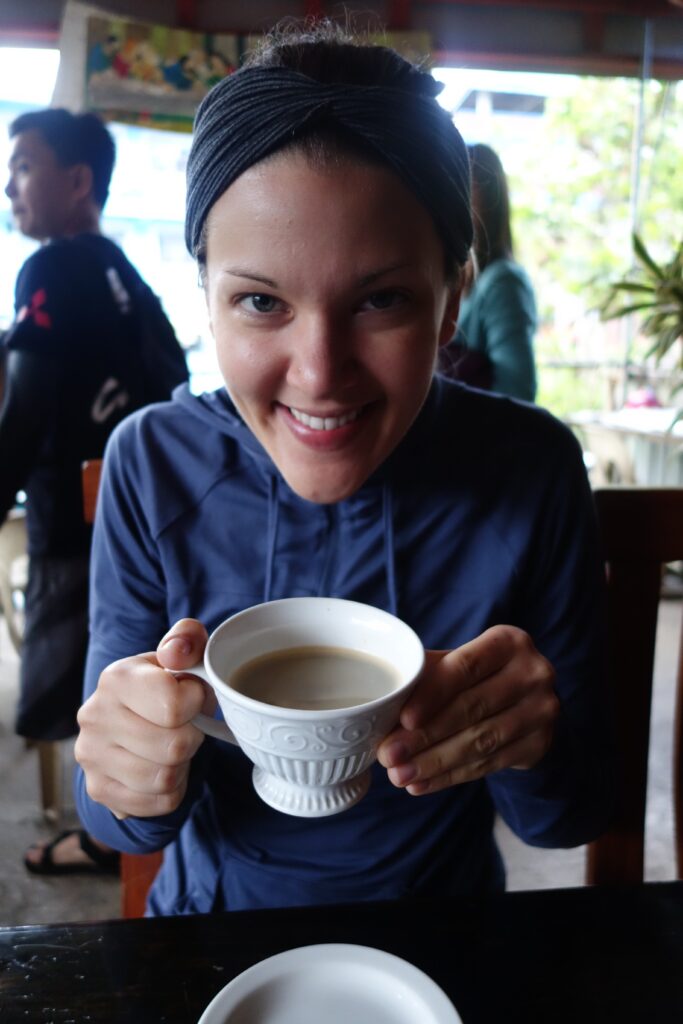
We also thoroughly enjoyed hiking the Marlborough Country and Blue Soil trail. The landscape was absolutely breathtaking and it was an adventure getting lost a bit and getting caught in a downpour. We were invited to take refuge in a small temporary hut where construction workers were having their lunch. By the end of the 6 hour ordeal we were soaking wet, blistered, and totally exhausted but with no regrets.
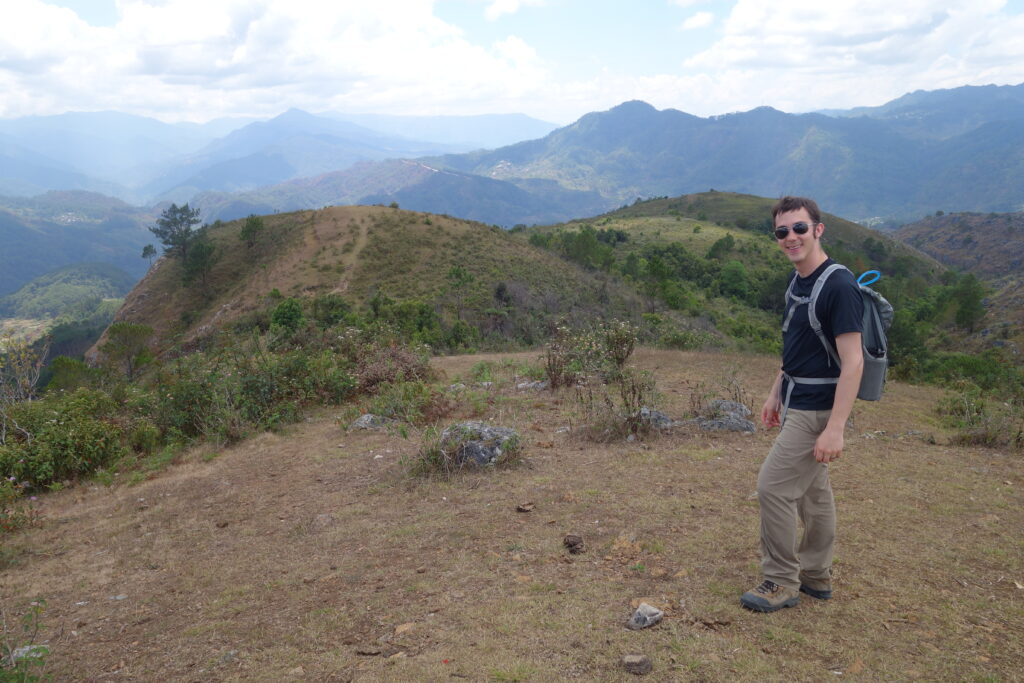

Last but certainly not least, the Cave Connection tour we took between Sumaguing and Lumiang cave was a blast. Our group of 4 spelunked with the help of an awesome local guide with a kerosene lamp. We squeezed through tiny spaces, climbed up, down, and across slippery walls, and waded through thigh deep cave water. The guide literally had to tell me exactly where to put my hands and feet in many parts in order to maneuver through the space (being climbers, we are already pretty good at body placement and weight shifting, so I think that says something). The experience was very physically taxing and incredibly rewarding. It was one of the most fun activities we have ever done!
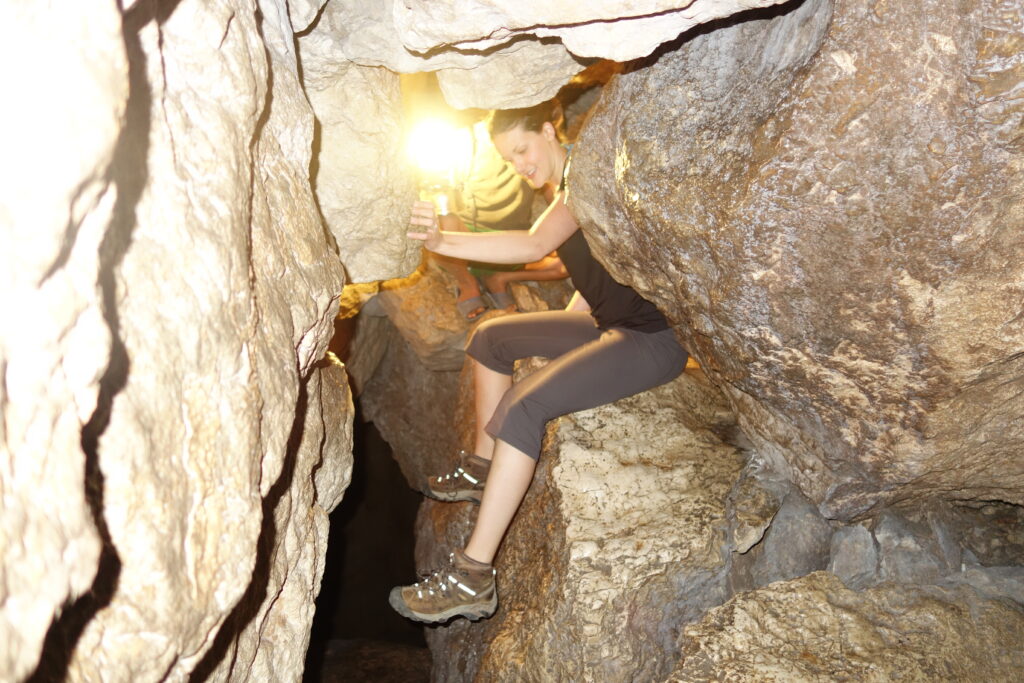
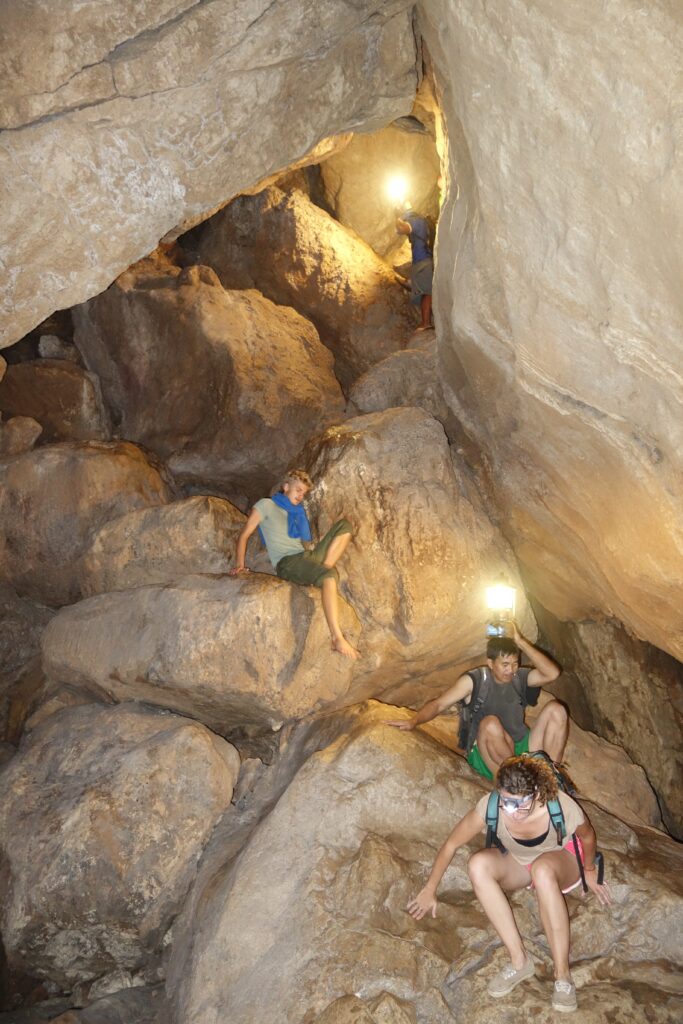
Banaue area
Banaue is also in Northern Luzon and is the gateway to the nearby UNESCO listed rice terraces. We explored the local rice terraces and then continued to hike through three small villages, Batad, Cambulo, and Pula. Two of the three villages are inaccessible except by walking trail. The final village does not even have an inn, just one local who opens up her home to travelers. We spent three days hiking along the terraces, spending a night in each village. The landscape was mesmerizing. The thousand year old man-made rice terraces were incredibly vast and beautiful and the locals were charming. Furthermore, we were in the company of great companions met in Batad. We traveled with a couple from Slovakia and a girl from Germany. We chose not to hire a guide, so we had fun getting slightly off track and using the path less traveled.
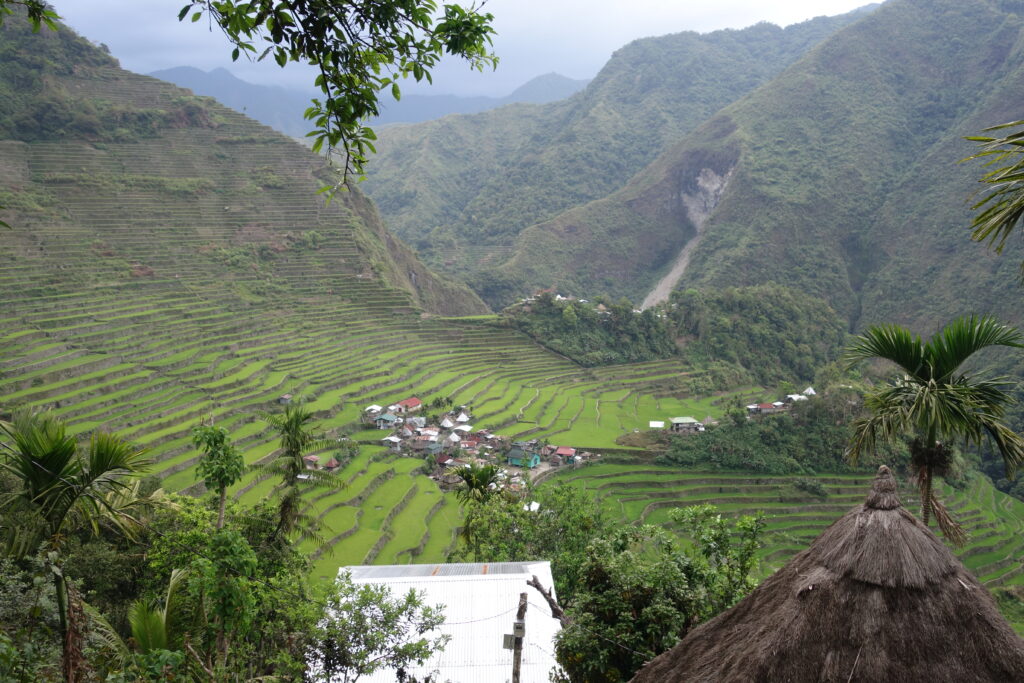

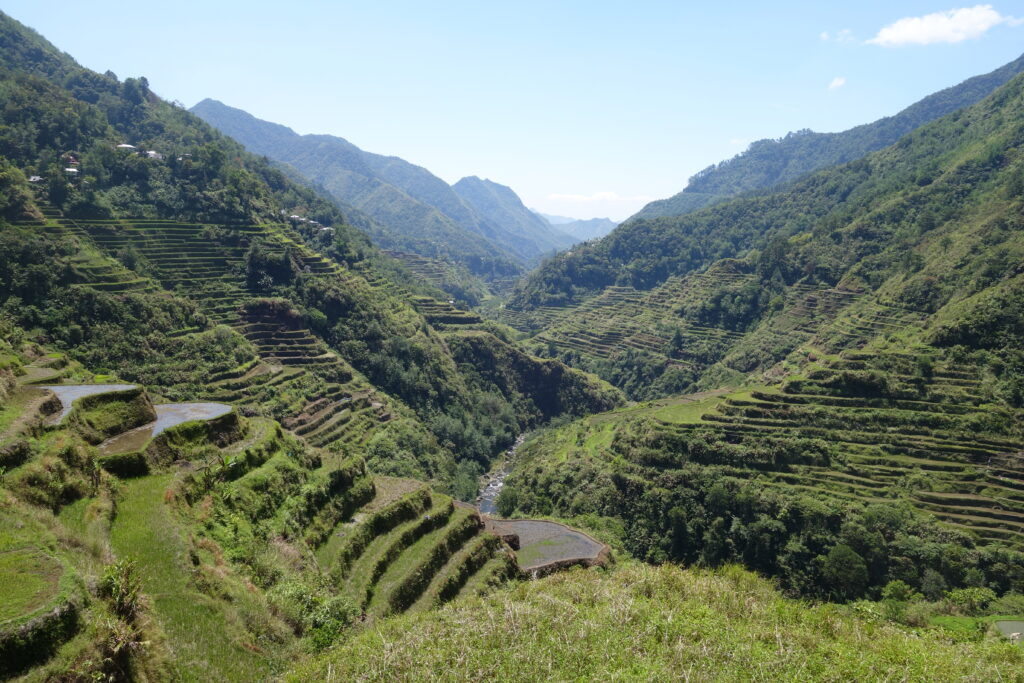
El Nido
El Nido is a town on the island of Palawan. It has a karst landscape boasting turquoise waters with limestone cliffs jutting out of the water as well as white sand beaches and coral reefs.
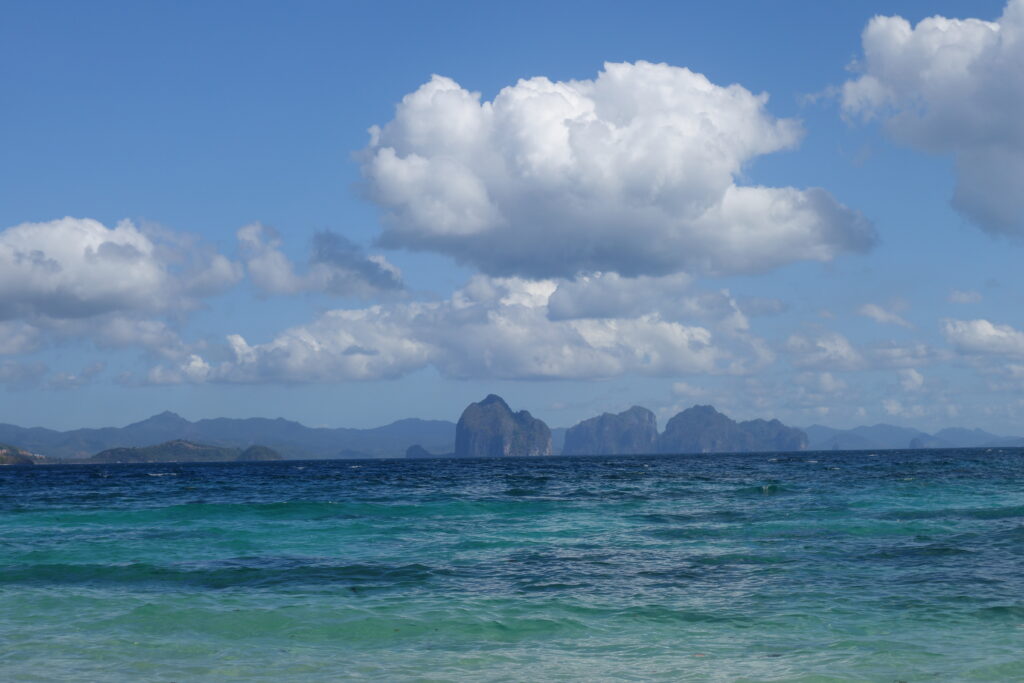
Serendipitously, our Slovakian friends were also in Palawan when we were there and we met up in El Nido. We booked an overnight tour with them and another couple which we ran into at the booking kiosk ($70/person for 2 days/1 night including meals, camping equipment, and boating around for 7 hours each day).
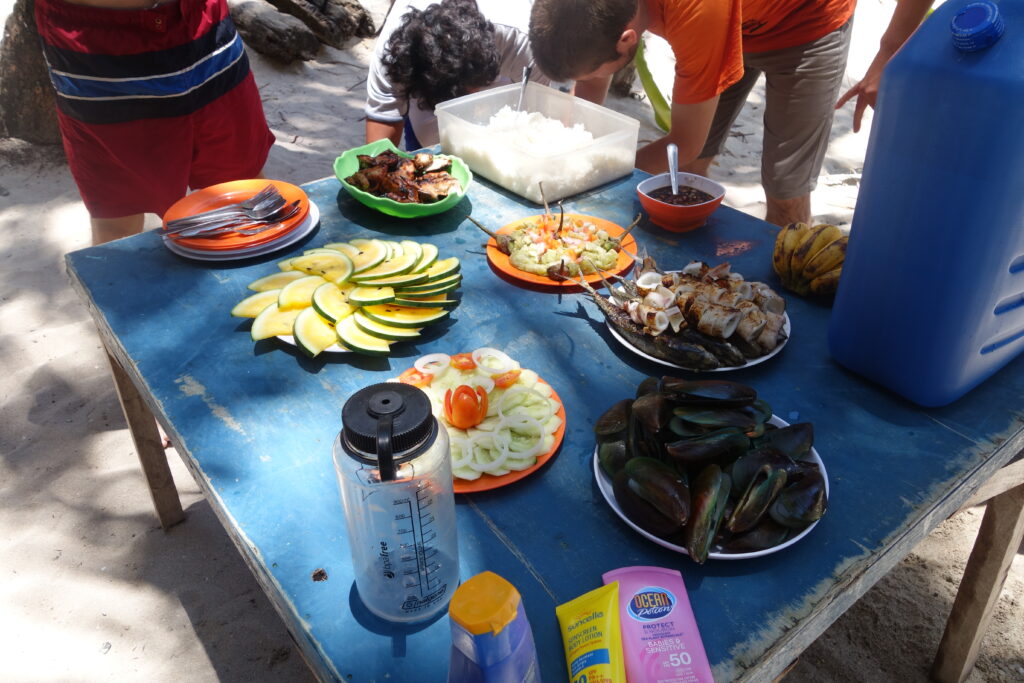
We were incredibly lucky that with 6 of us we were able to arrange for a private boat. We heard horror stories about crowded boats, drunk passengers, and too many boats crowding at the main sites. With a private group we were able to customize our trip in order to try and stay away from the crowds. We had an amazing and relaxing two days boating, swimming, snorkeling, lounging, and enjoying the scenery.
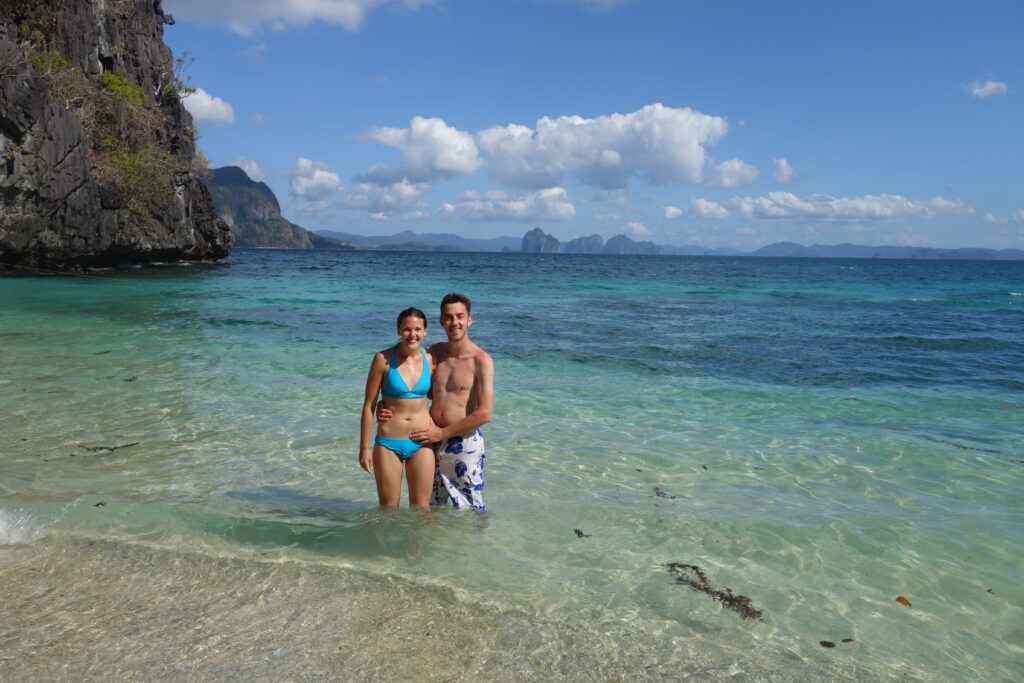
We ate amazing meals grilled on the boat and served on the beach, visited many lagoons and beaches, watched the sunset and gazed at the stars on our own private beach, and had a campfire complete with ukulele and local rum. It was paradise – literally, the name of the beach we slept on was paradise beach 🙂 This was such a pleasant surprise; we had heard that El Nido was touristy, crowded, full of party goers, and that we should seek an alternative – so we considered going to another city nearby instead. We’re glad we didn’t! We had a ton of fun and I’m sure that half of the experience was hanging out with two lovely couples – Barbora and Lubos from Slovakia and Charles and Saijai from France and Thailand, respectively.

Lake Taal and the Taal Volcano
This was a beautiful area to spend a few days. There is a giant caldera formed by a previous eruption that is now a lake. Inside the lake is the volcanic cone of the still active Taal volcano called Volcano Island. You can take a boat to the island and hike up to the top for a great view. On Volcano Island is another lake (Crater Lake), and inside that lake is another tiny island (Vulcan Point). An island, in a lake, on an island, in a lake, on an island, in the ocean. Yo dawg.

In summary, the Philippines had a few quirks and annoyances that we were happy to leave behind, but we will always look back very fondly on the memories that were built there and the spectacular natural scenery.
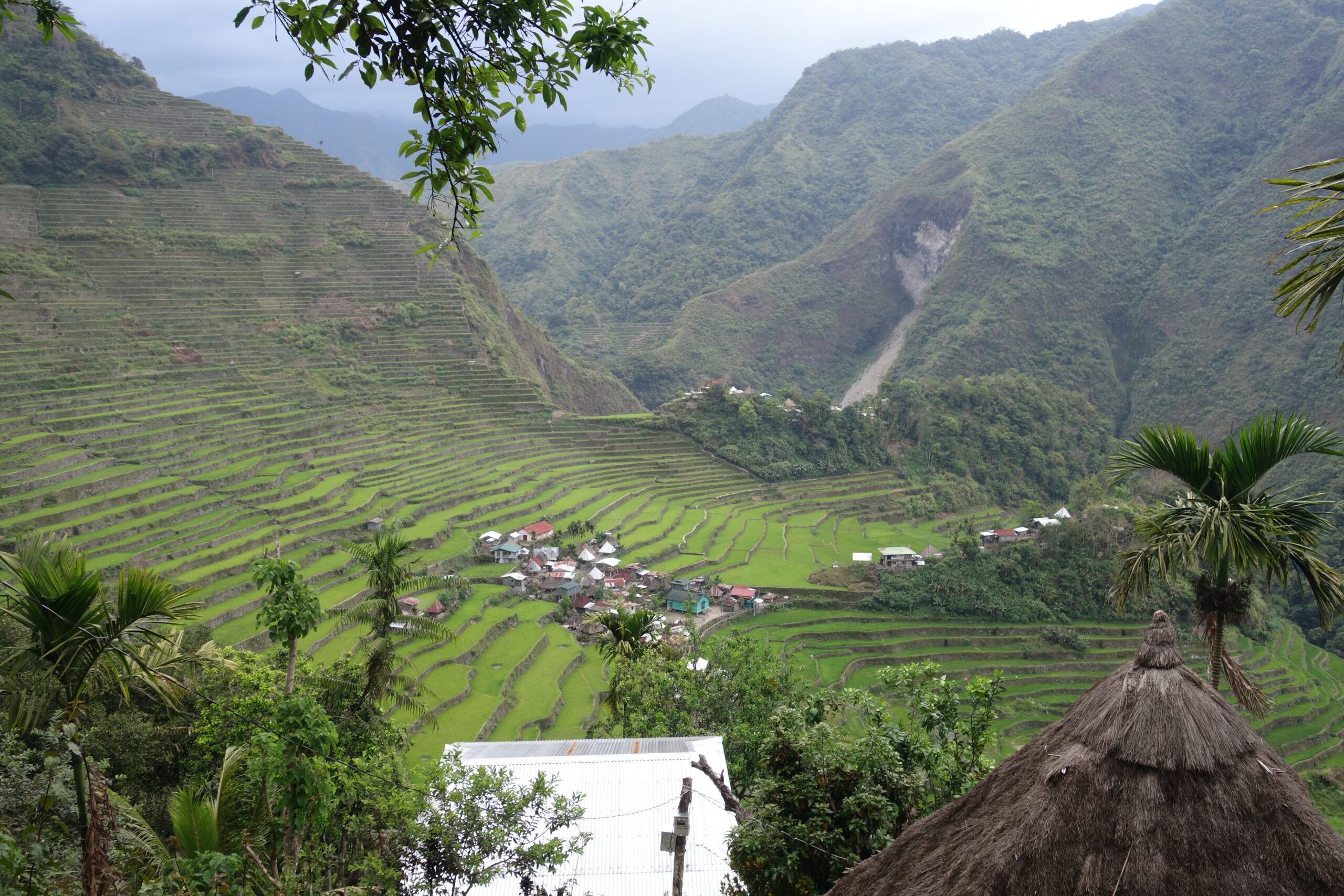

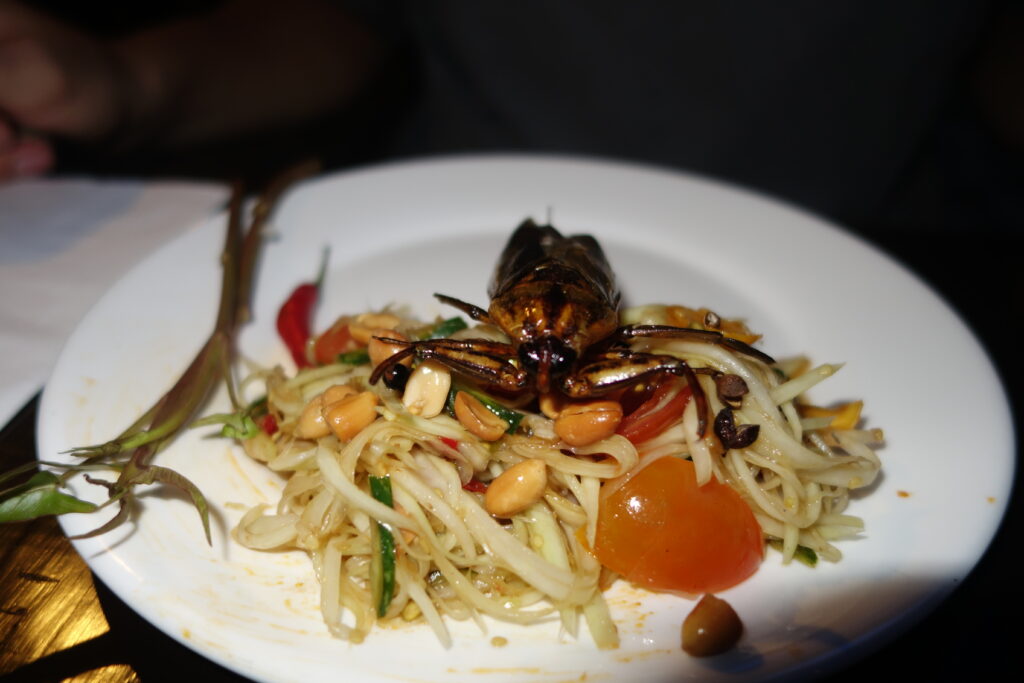
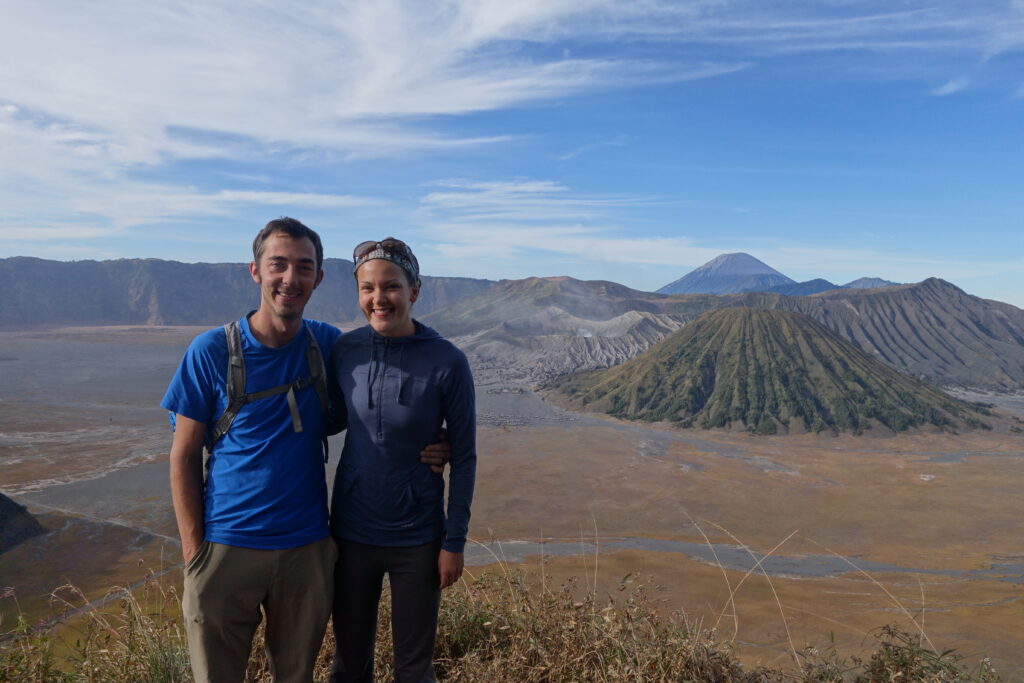
Loved this blog, Amy, especially all the photos.
The spelunking looked like fun and I’m sure it was even more so for seasoned climbers. Does anyone ever fall off the narrow pathway next to the rice terraces? Just glad you guys didn’t!
Despite looking at the photo carefully, I have NO idea what that structure was at the zoo. With all the trash and litter everywhere, did you see a lot of rodents? Looks like a dump for humans but a paradise for rats and mice. YEEESSSSHHHHH.
Your trip to El Nido and the subsequent boat tour looks amazing. Especially cool that you were able to have a private tour with your new friends. You guys are looking good!
On the picture of you next to the dilapidated tower, you can see the sweat running down your leg. You weren’t kidding about perspiring constantly.
Love,
Kim
Another thing I meant to mention…. The graffiti all around the hanging coffins is a nice touch no doubt. 🙂
my thoughts to this superb post:
-unkempt phl: I had these same exact thoughts a couple weeks ago when I was in New Orleans for a few days. Such a culturally interesting place, but it’s so shitty! Everything is a mess still because of Katrina (10 years ago…), but that can’t account for ALL of the city’s crumbling streets and homes. Coming back to chicago made me super thankful for city services that actually work.
-I like to think the Philippines just loves the 90’s.
-“A fine specimen”. loled literally
-TOOOOO SPOOOOOKY!! that youtube link though. another literal lol
-$600/lb for civet coffee?!?! ship like 80 lbs home, sell it, and pay for your entire years’ worth of travels!!
-private boat tour of El Nido: genius! that place looked AMAZING! and also like a young couple’s swinger hotspot. HA!
-yo dawg, xhibit would be proud.